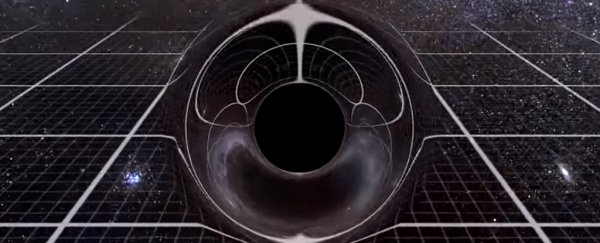Black holes are vast, matter-annihilating objects that seem to defy physics by their very existence. They're so weird, that when Albert Einstein's equations first predicted the existence of these beasts, he didn't believe they could actually be real.
And you can't really blame him, because the idea that we have these matter-sucking singularities of space-time scattered all around our cosmic backyard is pretty hard to wrap your head around.
But as people who write about black holes a lot, we figured we were past being shocked by how strange and massive they are.
That is, until we saw this video from YouTube channel morn1415, famous for their size comparisons of various objects in the Universe.
The video above on the size of black holes starts out a little dramatic, but when you get down to the visual comparisons, holy crap, our poor, tiny brains. We were so unprepared.
The first thing you need to know is that any matter can become a black hole if it's crushed past its Schwarzchild radius.
For our Sun, that means it would need to be crushed down to the size of a small town in order to become a black hole.
And Earth would have to be squashed to roughly the size of a peanut.
That's pretty incredible to think about. But then consider how massive that makes the other black holes that we know of, like XTE J1650-500, which is around the size of Manhattan, but contains the mass of three or four of our Suns.
Impressive, but that's one of the smallest 'destroyer of worlds' that we're aware of.
There are even more mid-sized black holes out there, like M82 X-1, which is crushed down to the size of Mars, and contains the mass of 1,000 Suns.
And we haven't even got started on supermassive black holes yet, which are found in the centre of pretty much every massive galaxy that we know of.
One of these black holes have a mass of 20 billion Suns. We won't even try to put that into perspective for you, because it really hurts to think about it too much.
Check out the video above to see just how big and massive black holes can really get.
Even if you think you know, you don't. Trust us.
A version of this article was originally published in November 2016.
